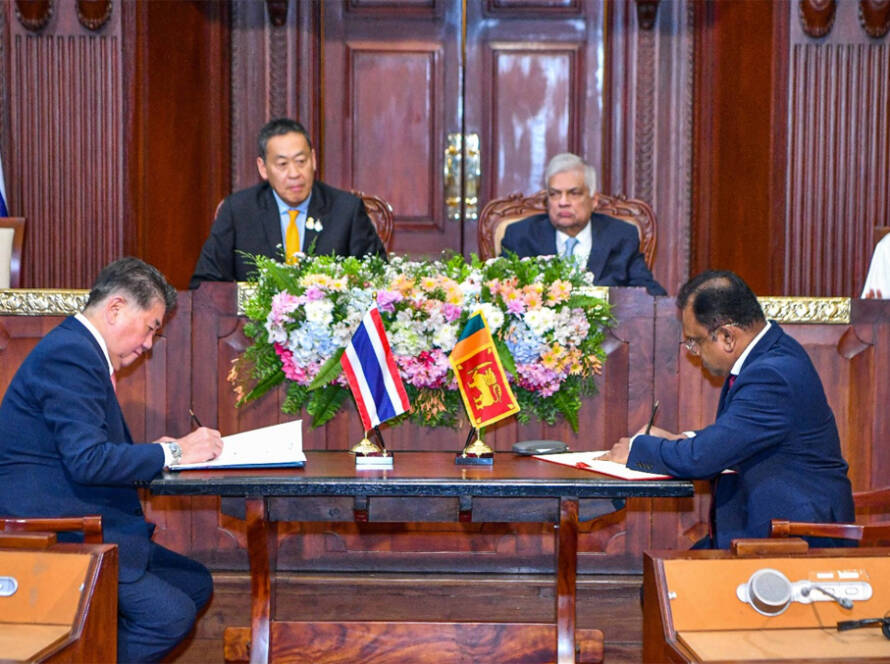By Amantha Gunarathna
Adani Group’s recent announcement of a USD 750 million investment in Sri Lanka’s power sector seemingly marks a significant stride towards bolstering the country’s energy infrastructure. This investment underscores the growing recognition of the importance of transitioning towards sustainable energy sources globally.
However, amidst the optimism, scrutiny arises concerning Adani’s track record in delivering green solutions. While the conglomerate has actively portrayed itself as an advocate for green solutions, it has faced criticism and controversies regarding environmental practices and transparency issues in various projects.
In Sri Lanka, concerns may arise regarding the extent of community engagement, environmental impact assessments, and adherence to regulatory frameworks. Transparency in investment dealings and operational processes becomes paramount to engendering trust and ensuring alignment with sustainable development goals.
Sri Lanka’s escalating energy demand necessitates urgent attention to infrastructure development. As an economy hit by macro-economic mismanagement, it needs innovative and quick remedies. With a growing population and expanding industries, the country faces a mounting need for reliable and sustainable energy sources too.
Adani’s plans to invest in Sri Lanka’s West Terminal and energy sector may, in the longer term, address these needs. The proposed investment not only underscores a substantial injection of capital into the country’s infrastructure but also holds the potential modernization of port facilities to facilitate efficient energy imports and distribution in addition to equipping country with clean energy.
As Sri Lanka strives to meet its energy demands while transitioning towards greener alternatives, collaborations with private entities like Adani can catalyze progress, ensuring the nation’s energy security and fostering economic growth in alignment with sustainable development objectives.
Adani Group’s global footprint in the energy sector paints a picture of a major player with a complex legacy. Beyond its domestic dominance in India’s coal mining and power generation, Adani has ventured abroad.
The Carmichael coal mine in Australia, touted as one of the world’s largest, exemplifies their large-scale ambitions. While the project promises economic benefits, it has faced fierce opposition due to environmental concerns. Conversely, Adani has also made significant strides in renewables.
Their vast solar power generation portfolio in India showcases their commitment to clean energy. These contrasting projects highlight Adani’s multifaceted role, a company driving economic growth while grappling with the environmental consequences of its energy investments.
Adani cultivates a green image through public pronouncements and substantial investments in solar and wind power. Their stated goal of reaching 45 GW of renewable energy capacity by 2032 underscores this commitment. However, the continued presence of fossil fuels in their portfolio raises questions about the complete sincerity of their green narrative.
Nevertheless, the company’s ventures haven’t been without controversy. The Carmichael coal mine in Australia is just the tip of the iceberg. Environmental groups have consistently criticized the project for its potential damage to the Great Barrier Reef.
Even within India, their operations haven’t been immune to legal scrutiny. The National Green Tribunal, India’s environmental court, imposed fines on Adani Power for violating emission norms at their Mundra power plant.
Allegations of stock manipulation and accounting fraud have also surfaced, leading to investigations and a significant drop in the company’s stock value in 2023. Most recently US prosecutors are investigating potential bribery by India’s Adani Group, focusing on founder Gautam Adani’s involvement.
The probe, including scrutiny of renewable energy firm Azure Power, is handled by the US DOJ. Investigations, spurred by stock manipulation claims, explore foreign corruption allegations and involve American investors.
Controversies like these raise concerns about Adani’s commitment to environmental regulations and ethical business practices. As the company expands its global footprint, ensuring adherence to stringent environmental standards and transparent operations will be crucial to regaining public trust.
Sri Lanka’s dealings with Adani regarding the proposed wind farm project in Mannar District have been shrouded in a cloud of transparency concerns. The Right to Information (RTI) Commission, upholding citizen rights, intervened by directing authorities to release details of the agreement between the government and Adani.
However, the information provided has fallen short of expectations. Environmental rights groups remain skeptical, demanding a thorough and independent Environmental Impact Assessment (EIA) before commencement of any construction.
Their anxieties are rooted in the potential ecological impact on Mannar, a region renowned for its delicate ecosystems and migratory bird habitats. The lack of readily available details regarding the project’s specific footprint, potential impact on local communities, and proposed mitigation strategies raises questions about the government’s due diligence process.
Critics fear the project might prioritize short-term economic gains over long-term environmental sustainability. Sri Lanka could benefit from this investment, but only if it prioritizes transparency. Releasing the complete agreement, conducting independent EIAs, and fostering open dialogue with environmental groups are crucial steps to ensure responsible development and safeguard Sri Lanka’s precious natural resources.
Developing nations often face a pressing need for economic growth, and large-scale infrastructure projects can be a tempting solution. Foreign investments like Adani’s offer a promise of job creation, improved living standards, and a modernized energy grid.
Sri Lanka has the opportunity to leverage this investment for its energy needs while safeguarding its environment for future generations. This path forward requires a commitment from all stakeholders.
Adani’s significant USD 750 million investment in Sri Lanka’s energy sector presents a double-edged sword. It offers the potential for bolstering infrastructure, propelling Sri Lanka towards a more sustainable energy future, and fostering economic growth. However, this progress hinges on a delicate balance between seizing investment opportunities, safeguarding the environment, and upholding transparency.
Sri Lanka’s energy needs are undeniable, and Adani’s investment can contribute to a modernized energy grid and economic development. However, the environmental concerns surrounding Adani’s past operations and the potential impact on Mannar’s ecosystems cannot be ignored. The key lies in striking a responsible equilibrium. Stringent environmental regulations, robust monitoring systems, and a commitment to clean energy solutions beyond wind power are crucial.
Transparency is paramount. The public deserves access to the complete agreement between the government and Adani, along with comprehensive and independent environmental impact assessments. Public participation in decision-making processes is essential to ensure responsible development.
Only by prioritizing both progress and sustainability, with transparency acting as the guiding principle, can Sri Lanka navigate this complex situation and ensure a future powered by clean energy and responsible practices.
Amantha Gunarathna is an educational consultant, a member of the British Computer Society, and an alumnus of the Open University of Sri Lanka.
Factum is an Asia-Pacific-focused think tank on International Relations, Tech Cooperation, and Strategic Communications accessible via www.factum.lk.
The views expressed here are the author’s own and do not necessarily reflect the organization’s.


